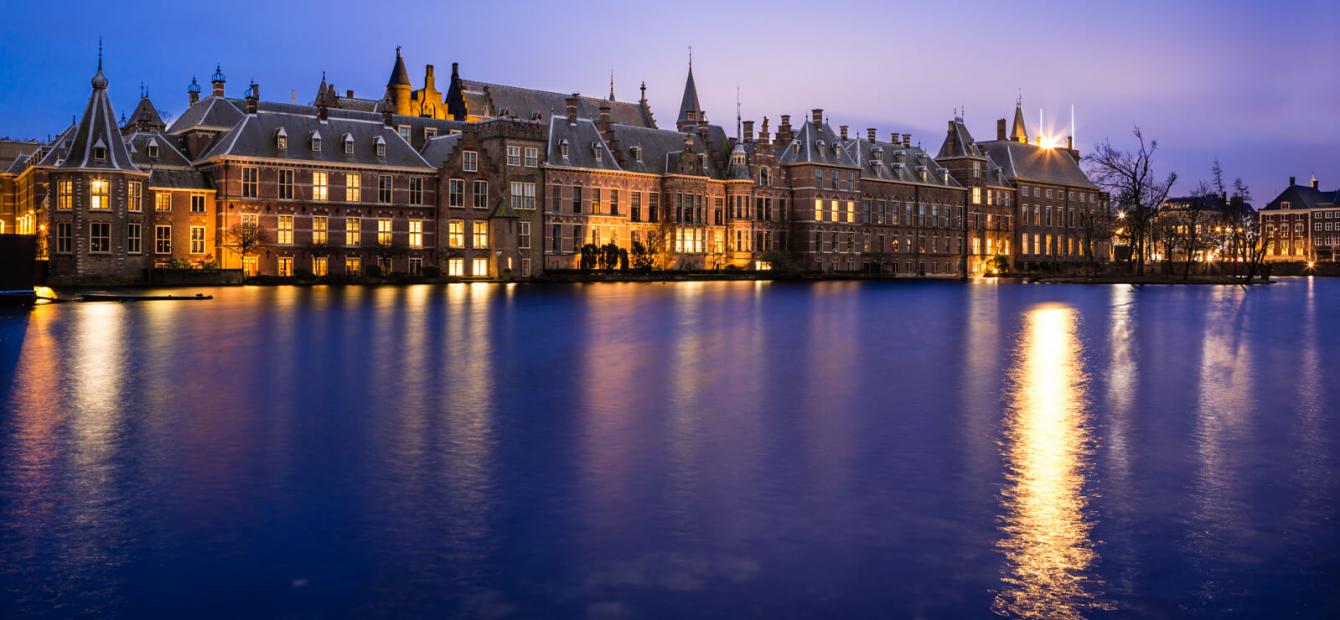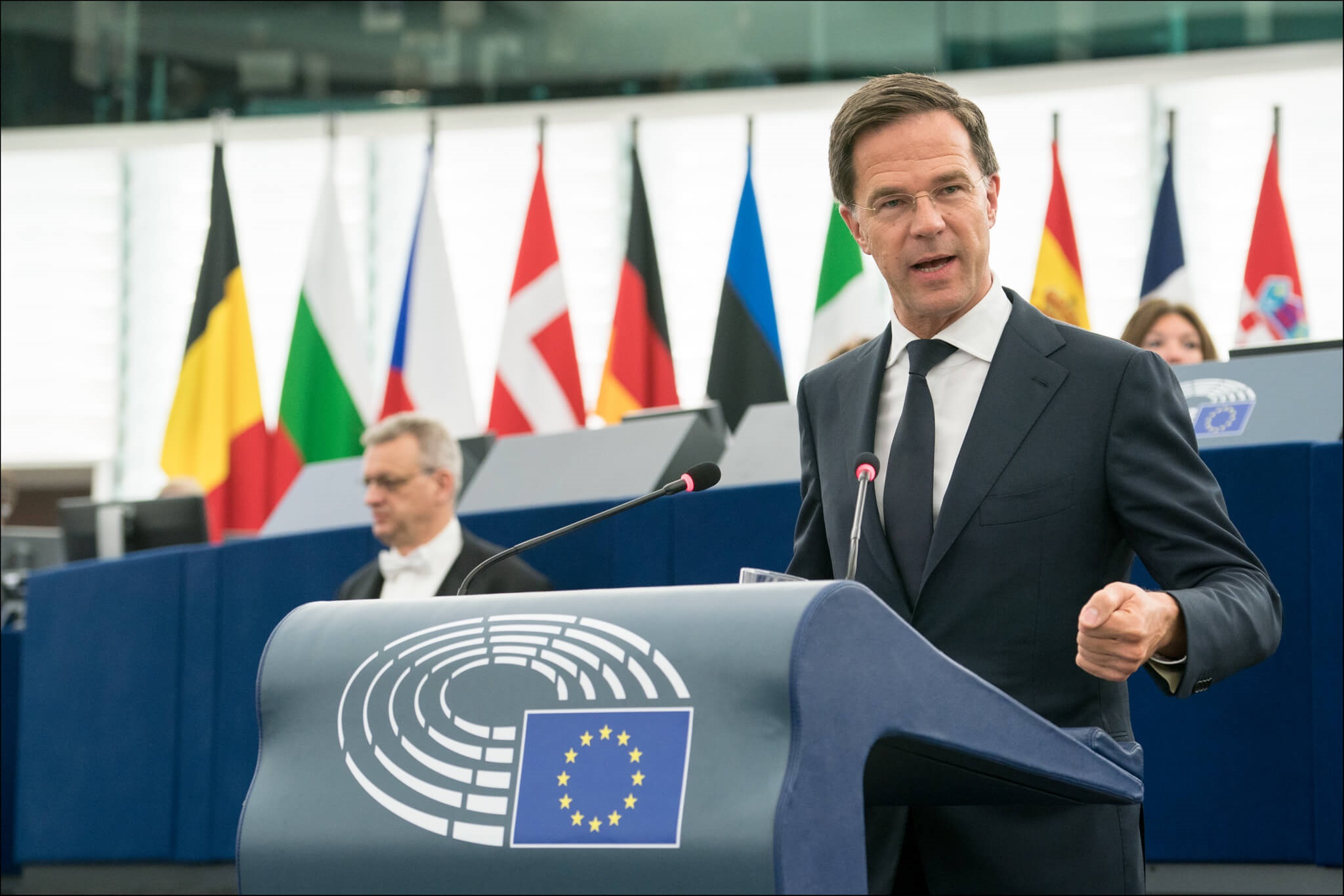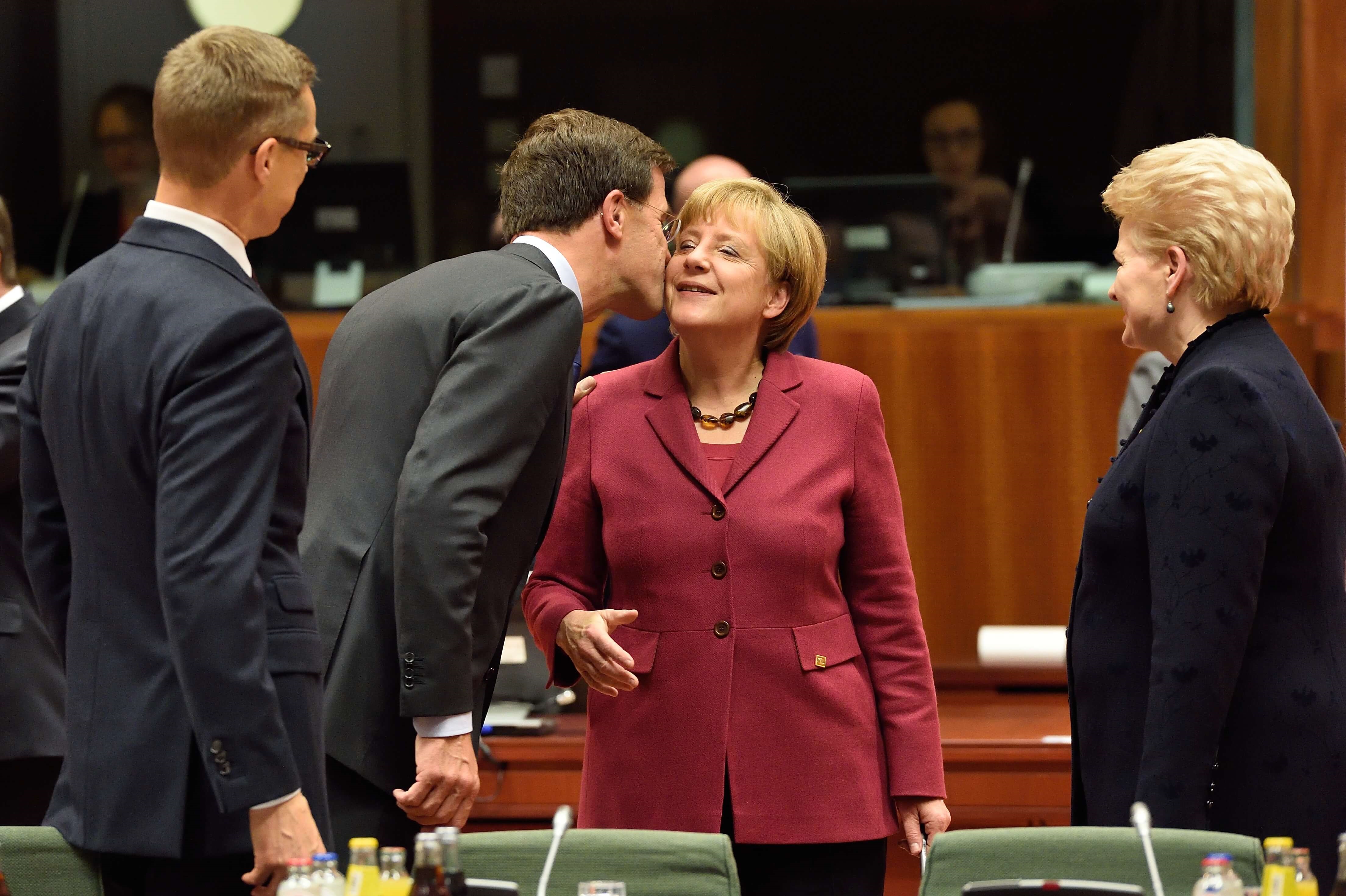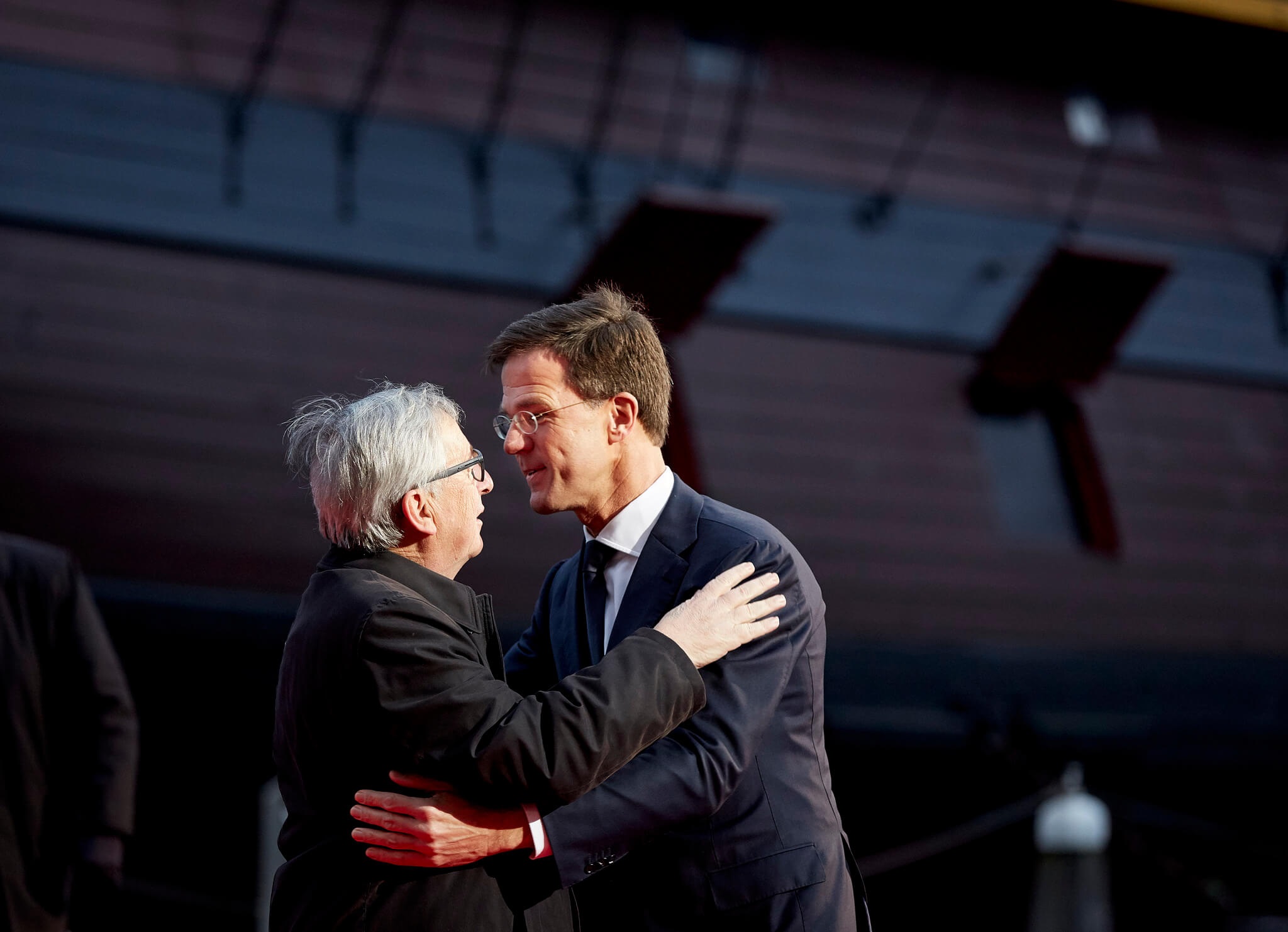
Why a new Hanseatic League will not be enough
The British vote in favour of Brexit has fuelled concerns in The Hague that the balance of power in Europe is shifting. Britain’s departure creates a vacuum and the Netherlands is repositioning itself.
Although in formal terms Brexit has yet to happen, EU governments seem to have already moved on. As one of the big three EU member-states, the United Kingdom was a hub around which like-minded countries naturally clustered. That British hub is gone and those left behind are searching for a new way forward. The Netherlands and others are forging new links in an attempt to assert their voice in Europe more strongly.
Britain’s vote to leave the EU, but also the election of Emmanuel Macron as French president, triggered concern in The Hague. The belief took hold that without a counterweight, Berlin – and Brussels – could go along with Macron’s new ambitions for deeper European integration. And some of those ambitions could be at odds with Dutch interests.

Over the past 18 months, prime minister Mark Rutte sought to strengthen links with a number of counterparts: in April 2017, for example, he organised a meeting with his Danish and Irish colleagues in the Catshuis, his formal residence. In June 2017, a month after Macron’s election, the three Benelux member-states visited the Visegrad 4 (Poland, Hungary, Slovakia and the Czech Republic). Later that same month the Dutch organised a mini-summit with the Baltic states, the Benelux countries and the EU’s Scandinavian member-states.
Alliance of eight EU countries
The most tangible result so far has been a letter published on 5 March 2018 and signed by the finance ministers of eight Northern member-states. In addition to the Netherlands, this included the three Baltic states, Finland, Denmark, Sweden and Ireland. To remove any doubt about who stood at the helm of this initiative, the Dutch government posted the letter with the following headline: “Minister Hoekstra forges alliance of eight EU countries for a stronger European economy.”1
The letter focuses on the Economic and Monetary Union (EMU) and emphasises the need to complete the Banking Union and develop the ESM (European Stability Mechanism) into a fully-fledged European Monetary Fund. But central to the letter’s message is that responsibility for Europe’s economic and monetary policy, and the necessary reforms to keep the EU economy robust, should (continue to) lie at the national level. That means no European budget, no EU economics minister and no major eurozone reforms. The Eight’s recipe for a strong EU is that countries should stick to (and implement) existing agreements. In Brussels the letter was seen as a shot across the bow of Macron’s European ambitions.
The name ‘Hanseatic League 2.0’ is far better than the alternatives doing the rounds, such as the ‘Gang of Eight’ or ‘Netherlands and the Seven Dwarves’
The coalition was quickly dubbed the ‘Hanseatic League 2.0’. In Germany’s absence, the name is obviously historically inaccurate. But the name is far better than the alternatives doing the rounds, such as the ‘Gang of Eight’ or ‘Netherlands and the Seven Dwarves’. The economically successful and politically decentralised late-Medieval alliance centred around Baltic trade echoes the ambition of the Eight: the EU should be trade-focused and forge agreements on economic and monetary cooperation, but should steer clear of centralisation and overly zealous political ambitions. The Dutch minister of Finance, Wopke Hoekstra, also announced that this group of countries would meet every couple of months to coordinate positions.
An ad hoc coalition?
There are three general types of coalitions within the EU. ‘Lead groups’ are fairly loose partnerships at officials level aimed primarily at putting certain initiatives in motion in Brussels. Think of the ‘lead group’ that promoted the development of the European public prosecutor. Ad-hoc coalitions are more political in nature but are one-off or focused on a single issue. By contrast, alliances emerge at the political level, are structural in nature and usually cover multiple issues. The Benelux is an example of this latter type. The question is how this new Dutch-led coalition should be viewed.
The Hanseatic coalition has more substance than a ‘lead group’; it is a blocking coalition at the political level. But is it an ad-hoc coalition, or an alliance? The new coalition is not sufficiently large to form a blocking minority under the EU’s system of qualified majority voting. But neither is the Benelux or the Visegrad 4, so that cannot be the benchmark. The Eight are sending a signal that the Northern countries will not simply nod through France’s reform plans. Among other things, the coalition is apparently the reason why, just after the ‘presentation’ of the coalition, on 21 March, President Macron came to The Hague for bilateral talks with the Dutch prime minister on the eve of the European Council summit.

The fact that Germany’s then-minister of economic affairs, Peter Altmaier, was present during the meeting that drafted the Hanseatic letter lends weight to the view that this coalition is meant primarily as a counterweight to Macron’s plans. By having a group on Germany’s right pushing back against French proposals, squarely positions Berlin in the centre, allowing it to build any subsequent compromise. Chancellor Angela Merkel was certainly lukewarm in her response to Macron’s plans. But was all that due to the Hanseatic coalition? After the Italian elections it rapidly became clear that any eurozone reforms would be extremely difficult.
An alliance is a coalition that is not merely focused on a particular subject, but is structural and covers a range of subjects. Simon Coveney, Ireland’s deputy prime minister, gave a speech in The Hague on 11 April. He expected the Hanseatic countries to make proposals on issues like the Middle East peace process and relations with Africa.2 If so, this could point to a new alliance indeed. But there is reason to doubt whether the other seven countries share this ambition. There are reasons to be sceptical. Aside from cooperation on EMU, there are subjects on which the eight countries fail to agree. These include the new EU budget, where the Baltic states challenge the hard line taken in The Hague. There are also wide differences of opinion between the Netherlands and the Scandinavian countries on the one hand and the Baltic states on the other when it comes to European migration policy and the resettlement of migrants and asylum seekers.
So at present we must see the new Hanseatic league as an ad hoc coalition. The logical consequence is that Netherlands will have to forge more coalitions to ensure that its voice is heard effectively in Brussels after the British leave. This will only increase the complexity and pace of EU diplomacy for the Netherlands. What remains unclear is whether the Dutch diplomatic service and the parliamentary apparatus is suitably equipped for this task.
A small group of wealthy, northern countries
In the corridors of The Hague, and somewhat in Brussels, the Hanseatic group is seen as a specific initiative of the Dutch. The Netherlands claims leadership of this coalition and cooperation with these seven countries is indeed something new for The Hague. But the Baltic and Scandinavian states, for example, already meet in the ‘NB6’ (Nordic-Baltic 6) format, bringing together six of the eight Hanseatic countries. These countries are wondering what is so new about the Hanseatic coalition. Surely it is just the NB6 plus the Netherlands and Ireland?
The Hanseatic coalition is also seen as a group of wealthy, Northern countries keen on distinguishing themselves from the Southerners. This is consistent with athe analysis that the relative weight of Southern EU member-states will increase after Brexit. The problem is that from this perspective the Hanseatic group is hardly new; on the contrary, it just amplifies the existing north-south divides within the Union.

It would be good for the European Union and for the position of the Netherlands in the EU if, in its efforts to forge new coalitions, the Dutch government sought to bridge the north-south divide, not accentuate it. That could give rise to real new and strategic partnerships. With regard to EMU reforms, for example, there are also Southern countries that believe EU member-states should respect previous agreements, such as Spain (especially under its previous government). The failure to persuade Madrid to be a cosignatory of the Hanseatic letter was a missed opportunity.
There is a risk that due to the Hanseatic coalition, others will start to see the Netherlands as the leader of a club of smaller, wealthy, Northern countries seeking to curb reforms that benefit Southern states. After all, at present, the coalition hardly has a constructive agenda. The Dutch government would therefore do well to seek coalitions that could take innovative and constructive steps on EU policy, not step on the brakes. The Netherlands is now increasingly portrayed as the “new United Kingdom” in the EU.3 And given recent political developments in the UK, surely that cannot be the intention?
- 1Dutch government, “Minister Hoekstra smeedt alliantie van acht EU-landen voor een sterker economisch Europa”, 6 March 2018.
- 2Department of Foreign Affairs & Trade, “Speech by Tánaiste Simon Coveney T.D. at The Hague, the Netherlands,” 11 April 2018.
- 3The Economist, “How the Dutch will take Britain’s place in Europe”, 31 March 2018.






0 Comments
Add new comment